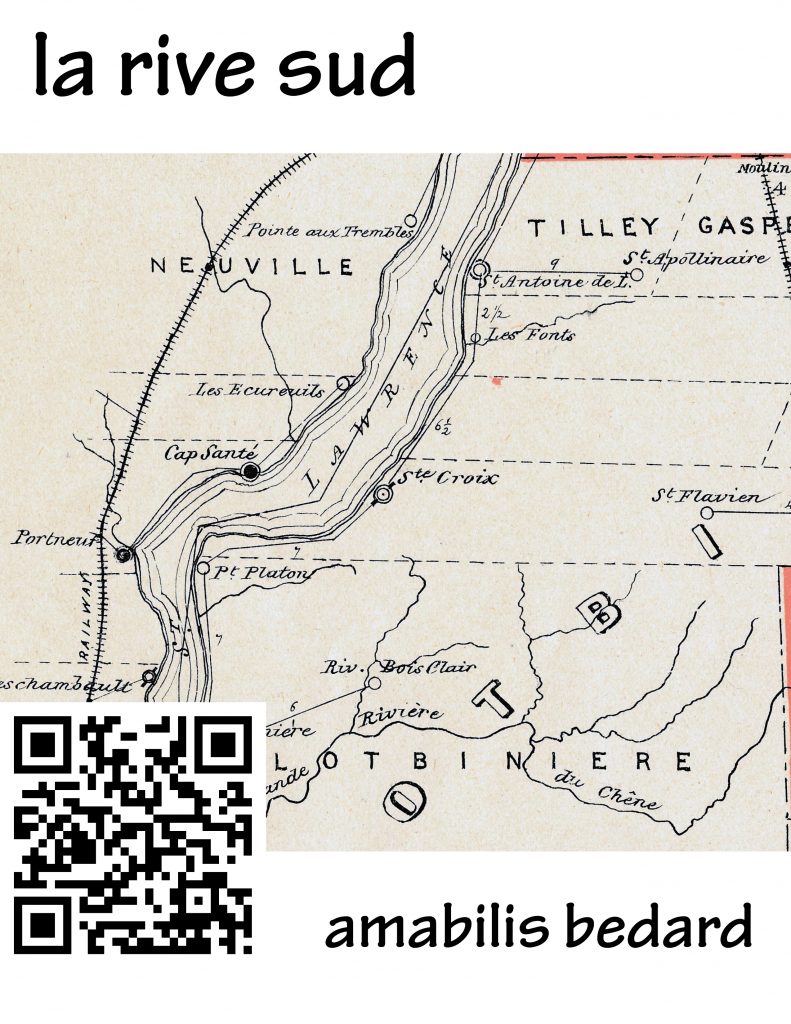
Charlie Race was one of those cooks who hated to see anything go to waste. No doubt it had as much to do with his upbringing as professional pride.
Growing up in a large family in northwestern Ontario during the 1920s and 30s, there would always be enough food to go around, but only just. And as a cook with the 1st Canadian Infantry Corps in Italy during World War II, he learned to stretch field kitchen supplies to the limit.
My first encounter with Chuck’s resourcefulness – we called him Chuck although the masters called him Charlie – came during a morning recess shortly after I arrived. Several of my classmates had returned from the kitchen with cold pancakes. They were the remains of that morning’s breakfast.
I’d never heard of eating cold pancakes. I might have been more interested in trying them if they had been topped with jam or honey. But plain, cold pancakes had no appeal. I’d had a hard time getting through a couple of hot ones during breakfast.
At least then there was some of the school’s answer to syrup – brown sugar dissolved in hot water – to pour over them. They tended to be much doughier and sank like a stone the minute they hit your stomach.
It wasn’t long, however, before I realized my classmates had no intention of eating the pancakes. In fact, they were all busy fashioning them into small, doughy projectiles.
In a matter of minutes, the classroom had become the battleground of a pancake war. The battle was still raging when the bell rang to end recess. Unfortunately for the combatants, Mr. Bennett arrived back in the classroom more promptly than usual. He, of course, dealt with the incident in the customary manner – a spanking for each of the offenders.
At lunch that day a new rule was introduced. Henceforth, no food was to leave the dining room. Gourmet, it may not be, but the masters felt Chuck’s cuisine deserved more respect than was evidenced by the doughy duel at recess.
A more memorable example of Chuck’s ingenuity in disposing of the less popular items on his menu came a few weeks later.
Charles Race was a big man with broad shoulders and a balding head that was always topped with a short-order chef’s paper cap. The rest of his uniform invariably consisted of a well-worn, once-white apron that covered a khaki shirt rolled up at the sleeves and a white t-shirt.
On special occasions, such as the Christmas banquet, he would don a white shirt and a white pair of pants but still, he would go with his customary slippers trimmed with fake fur.
On weekdays Chuck lived in a cubby-hole of a room on the second floor of the stone building. His wife Verna, four sons, and three daughters lived only a couple of miles away in one of the rickety frame houses on the outskirts of Selkirk. They had no car so Chuck only went home on his one night off, Saturday.
His day began at 6 a.m., an hour before our wake-up call. Many mornings he would emerge from his lair grumpier than a bear disturbed from hibernation. Often, we suspected, it was the morning-after effects of his only fondness for the fermented grape. An unmistakable odour of homebrew used to drift down the hall whenever his door was left open.
His early morning tasks were always the same: make the porridge, mix the batter for pancakes or french toast, or prepare the eggs for scrambling, poaching, or frying. I was on kitchen crew during my first month at the school, so I always got a sneak preview of the menu when we arrived to set the table.
The first time I set eyes on cornmeal porridge – a yellowy, coarser version of Cream of Wheat with an unpleasant odor – I made the mistake of broadcasting my reservations while standing at the serving window.
“Yucch. What is it?” I inquired.
“Just put it on the table, God damn it,” the cook bellowed in his surliest voice.
None of the cook crew even cracked a smile at the outburst. On a bad day, he was a monster to work for. He was known to smash a metal tray of cake over the head of any boy who dared to ask for more. More than once a crew member had been fired for mistaking salt for sugar. That morning Chuck had them walking on tiptoes, so foul was his mood.
Moments later, the sound of stampeding feet heralded the arrival of the student body for breakfast. The sight of cornmeal porridge in the serving bowls didn’t cause anyone to turn around and walk out but the groans were unmistakable. Not until the duty master called for silence for the singing of grace did the chorus of complaints die down.
“Quiet, please,” Father Millward urged the roomful of boys squeezed along the rough, plywood tables.
Arthur Millward was a soft-spoken Anglican priest with a scholarly wit. Of all the masters he was least suited to the role of disciplinarian. He had arrived at the school to become chaplain just two months earlier.
“Cook crew in,” were his next words but they were said too softly to be heard over another outburst from the cook:
“Lift the thing, don’t drag it, damn it.”
One of the smaller boys was attempting to lug a 5-gallon milk can across the floor and lift it onto a stool for pouring. A stream of slopped milk followed his footsteps.
Father Millward waited patiently for the gales of laughter to subside before repeating himself. This time word reach the cook crew and Father Millward was able to begin the singing of grace.
After sitting down, the senior boy at the end of the table made sure everyone had a hearty helping of porridge in his bowl. But there wasn’t much eating going on. He had heaped up each bowl to ensure the serving dish was would pass inspection.
Chuck’s rule was simple: no eggs and toast until the porridge bowl was empty. That morning he was personally inspecting. As a result, servers from several tables had been sent back to get their bowl cleaned up.
Since very few boys had eaten what was in front of them some unorthodox methods of disposal were required to enable all the tables in the dining room to move on to the next course.
Those tables along the south wall had it easy since several of the windows swung open. Any excess would be discreetly spooned out the window and onto the ground below. Other tables had to be a bit more inventive. Some collusion was required whereby one table would quietly pass its excess on to another and then take it back when the serving bowl had passed inspection.
When the meal was over, of course, uneaten porridge would mysteriously find its way back to the kitchen in the serving bowls that in theory were empty. Chuck was not amused, particularly because he always made far too much and the pot on the stove was still half full.
But he was not one to give up easily. If his customers didn’t care for it as porridge, he would find another way of serving it. Because I was on the dish-washing detail that day I happened to overhear Chuck’s instructions as to the fate of the uneaten porridge.
“Like-a, like-a, get a couple of baking pans from the pot room,” he began with his unmistakable stutter, “and scrape what’s leftover into them.”
“What are you going to do with it?” asked one curious crew member.
“Like-a, make it into Johnny cake,” he replied with a grin. The last laugh would clearly be his.
Chuck took pity on us at noon that day, but when the supper hour arrived there was an unmistakable odor of baking in the air. Sure enough, dessert that night was leftover cornmeal porridge disguised as Johnny cake.
Hot syrup – again brown sugar dissolved in water – was provided as an incentive to it. But it made little difference. Once again more than half of what when out came back to the kitchen untouched.
The next day Chuck mixed the remaining Johnny cake in with jello and served it as an optional dessert for lunch. The alternative was an apple. Most of us took the alternative. So now Chuck was stuck with leftover jello as well as Johnny cake.
The cornmeal porridge made one final appearance the following day when at lunch we were again given a choice: canned fruit or jello and Johnny cake but with a variation – it was topped with fake whipped cream.
Very little of the Johnny cake returned to the kitchen this time, but one glance at the tables would have told you why. Everywhere you looked sat dishes of Johnny cake and jello minus the whipped cream. It was then that Chuck’s cornmeal cereal was finally served to his most appreciative diners – the pigs. Several months passed before we had to suffer through the recycling of cornmeal porridge.
The majority of his leftover specials were of the “throw it in the soup” variety. Nobody complained about that because you usually couldn’t tell. When he said, “Shoot the veg,” he either meant send them out to the tables or dump them into the big pot on the stove. One day they would appear as boiled potatoes, wax beans or carrots, the next day they would re-appear as shepherd’s pie, chili or beef stew.
There were a few such combinations I was not partial to, however. They were the ones that tried to recycle blood pudding or head cheese. Next to tabasco sauce, there was nothing Chuck enjoyed eating more than those two. And I don’t think he ever accepted the fact that no matter how often he tried to serve them, very few of us would eat either blood pudding or head cheese. Fortunately, there was always something else on the menu those days.
Most weeks there would be one day when Chuck was king of the school. Those were his baking days. His specialties were date squares and cinnamon buns. Jam tarts and chocolate cake came a close second.
In addition to the members of the Cook crew, there was usually a handful of other boys who made themselves available during recess or the afternoon break to do odd jobs for him. Collectively they were known as “Chuck Sucks.”
Needless to say, they were regarded with contempt by everyone else – except on baking days. Suddenly they found themselves very popular. They were now in a position to provide extra servings of whatever was in the oven that day.
Chuck’s baking rarely lasted more than a couple of days. One of the reasons was overnight “shrinkage.” And certain masters stood as high on the list of possible suspects as the students. Each time Chuck would lose a tray of buns in the pantry he’d vow to get a better lock, but it never seemed to solve the problem.
My favorite meal was roast beef. I remember it most during the winter because it was served at lunch on Wednesdays before we went snowshoeing. Perhaps in recognition of the arduous afternoon that lay ahead, he made sure there was as much beef, mashed potatoes, gravy, and canned corn as we could eat.
At the end of the run, there would usually be something freshly baked to go with the baked beans or chili that awaited our arrival back, often hours after the supper hour. His efforts on Wednesdays were enough to silence his critics for at least a day. Then he would go and do something unpopular, like serve fried baloney for lunch.
Richard de Candole has been working in British Columbia and Alberta as a reporter and editor for over 40 years. Toughest School in North America is about his five years as a student at St. John’s Cathedral Boys’ School in Selkirk, Manitoba from 1962 to 1968. Richard lives with his wife Wendy in Qualicum Beach, British Columbia.
bedard.com is serializing Toughest School in North America for your reading pleasure. I hope you enjoy it as much as I do. If you’d like to preorder a copy of the book, leave a reply below. All replies are moderated.





